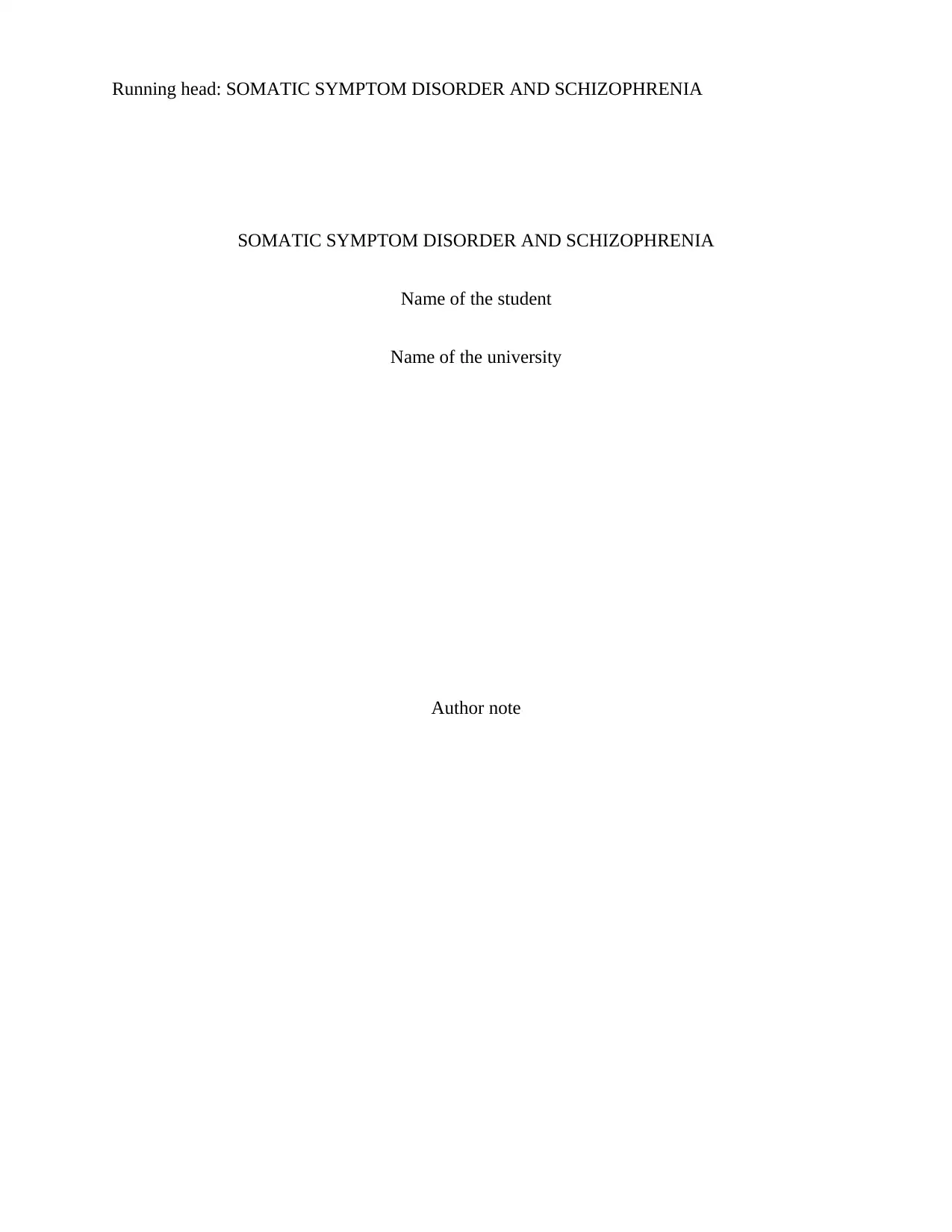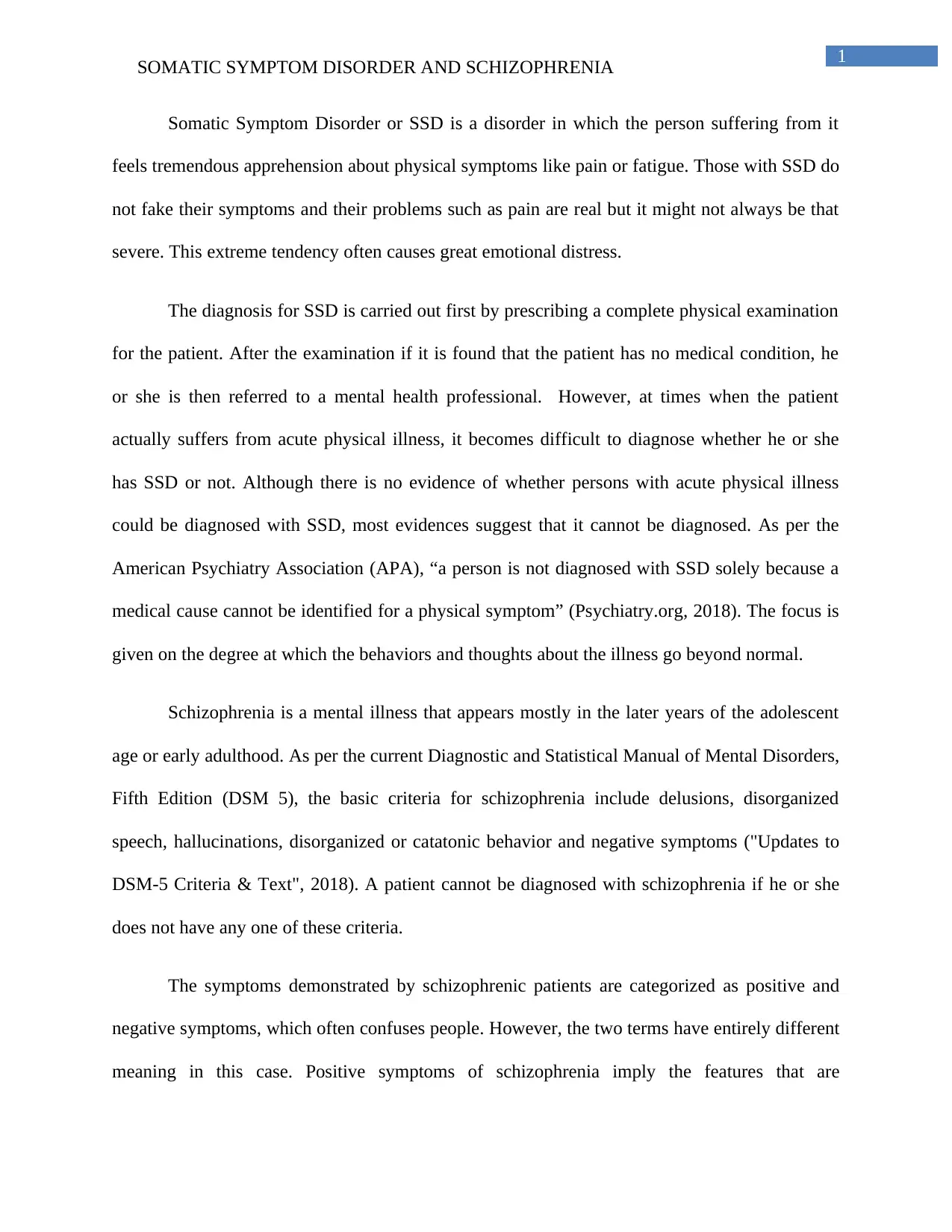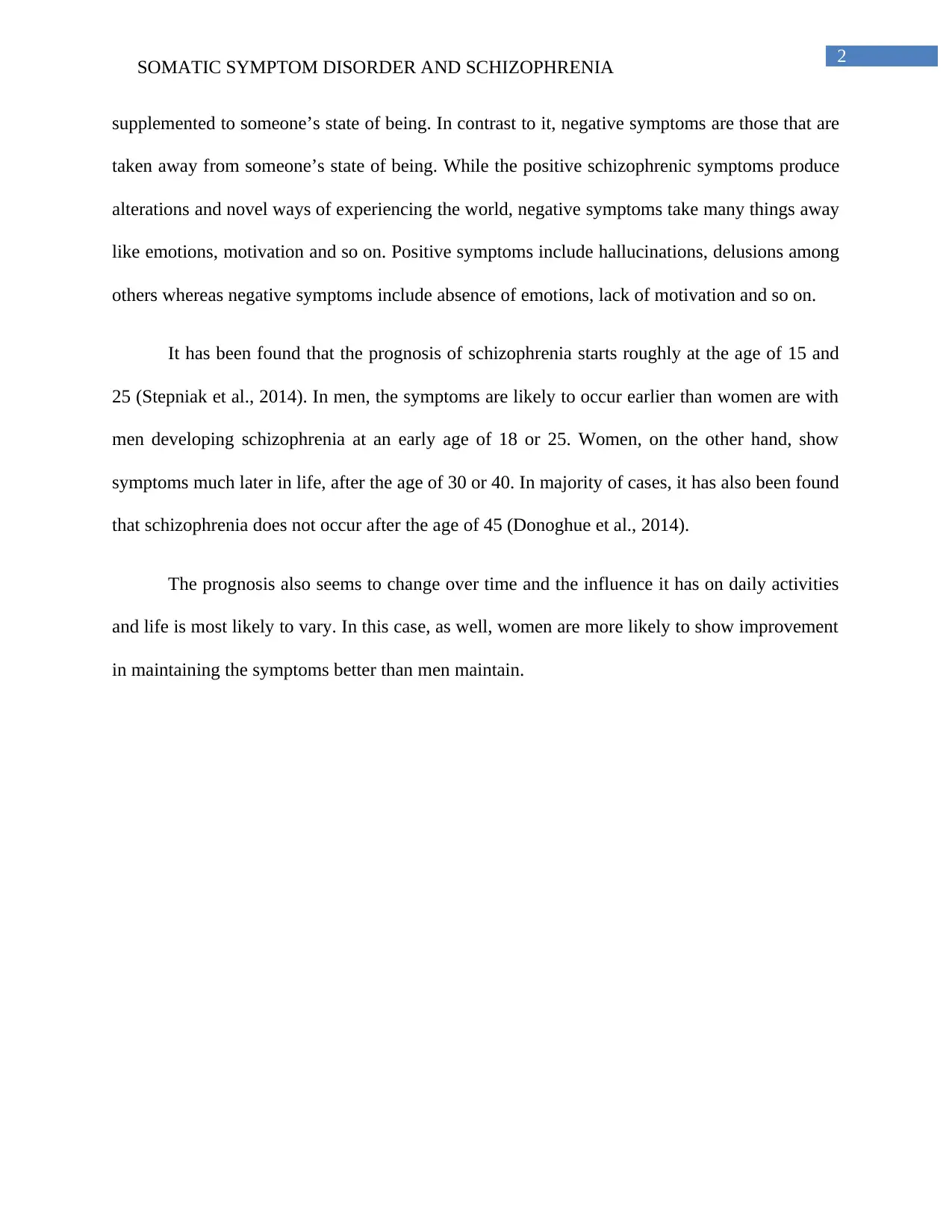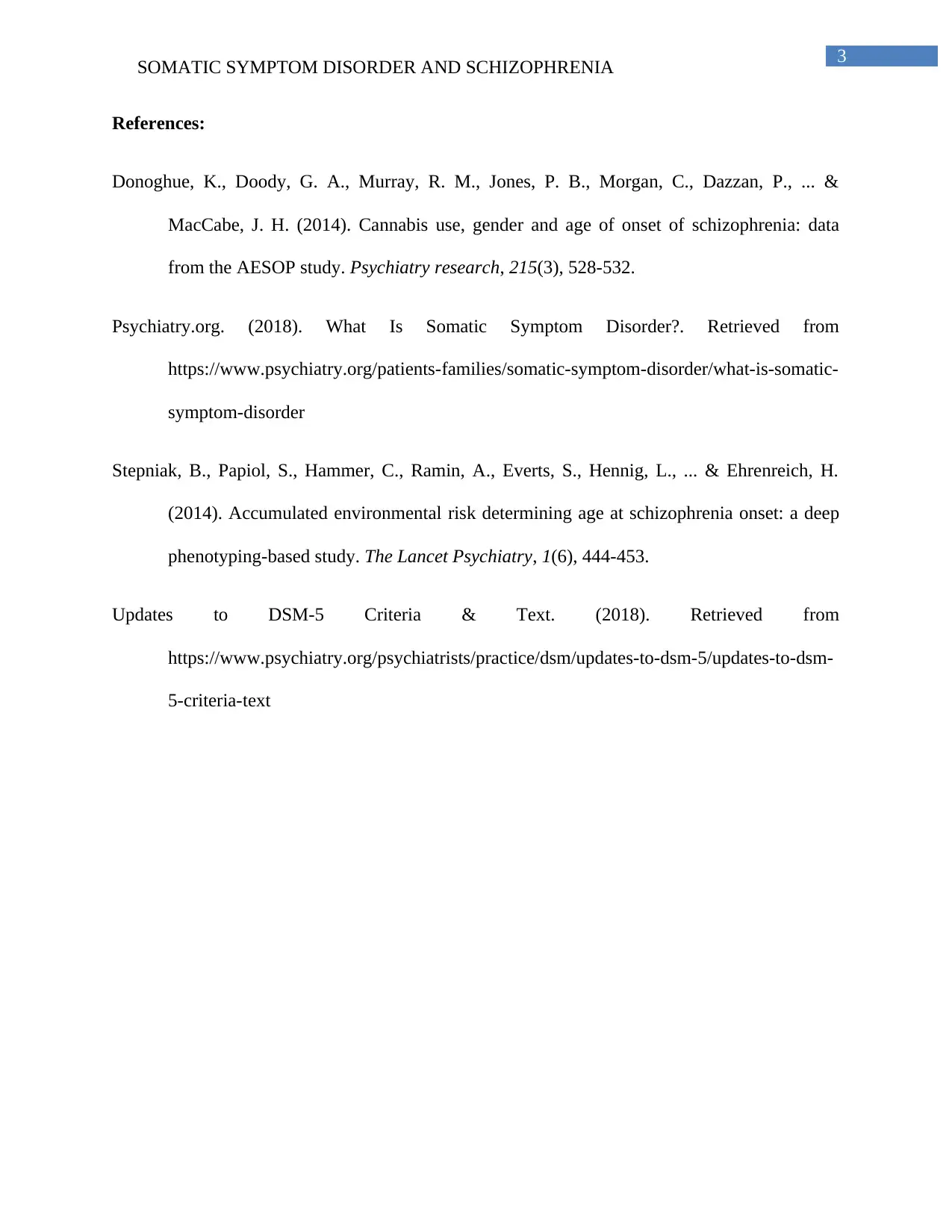University Essay: Somatic Symptom Disorder and Schizophrenia Analysis
VerifiedAdded on 2023/05/29
|4
|783
|260
Essay
AI Summary
This essay provides a comprehensive overview of Somatic Symptom Disorder (SSD) and Schizophrenia, addressing key aspects of each condition. It begins by defining SSD and exploring its diagnostic process, including the challenges when a patient has an actual physical illness. The essay then delves into Schizophrenia, detailing the basic criteria according to the DSM-5, and differentiating between positive and negative symptoms. Furthermore, the essay examines the prognosis of Schizophrenia, considering the influence of age and gender on the onset and progression of the disorder. The analysis is supported by relevant research and provides a clear understanding of these complex mental health conditions. This essay is a valuable resource for students studying abnormal psychology, offering detailed insights into the symptoms, diagnosis, and prognosis of SSD and Schizophrenia.
1 out of 4











![[object Object]](/_next/static/media/star-bottom.7253800d.svg)